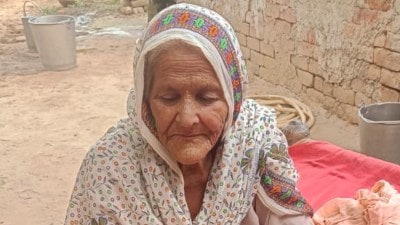GoM recommends new, friendly policy on land acquisition
The government should restrict itself to acquiring only 30 per cent of the land required by private enterprise for projects...

The government should restrict itself to acquiring only 30 per cent of the land required by private enterprise for projects such as the Tata plant at Singur, and do so only after the developer has purchased the remaining 70 per cent at market rates, a Group of Ministers decided on Thursday.
The Group of Ministers on Land Acquisition and Relief & Rehabilitation said all land acquisitions, the intended category of land use, and other details should declared upfront so that the extent of compensation for people selling their land could be determined fairly. This is in line with a Supreme Court order that, while determining compensation, the Government should take into consideration the purpose for which the land is being acquired.
The Government compensation for acquired land will be the three-year average of prices at which similar land in a similar location has been sold. The averaging will also include the land purchases made by the project developer. These measures are meant to protect those from whom land is acquired from losing out on the sharp rise in land price that takes place when a project is announced in an area.
To offset the practice of undervaluing land deals in order to pay lower registration fees, the Government has raised from 30 per cent to 60 per cent the solatium it pays on acquired land.
The policy approved by the GoM is also in line with Congress chief Sonia Gandhi’s wish that relief must be provided to all those who stand to lose their livelihood because of land acquisition.
The present policy compensates only those who possess undisputed legal titles, cutting out tenants, sharecroppers and labourers, who are in fact the most vulnerable and in need of support. In Singur, it was such farmhands who had opposed land acquisition.
The GoM has changed the eligibility criteria of an affected family to provide relief only for those associated with or residing in that land for five years instead of three years. At the same time, it has expanded the definition of “person interested” to include tribals and other traditional forest dwellers losing any traditional rights. A member from each displaced family will also be offered a job at the project.
When land is being acquired for irrigation projects, the displaced will get new plots from land banks the state has been asked to develop.
Where no agricultural land or job can be given, the affected person will get 750 days of minimum agricultural wages as Rehabilitation Grant with the option of investing 20 per cent of it in the shares of the developing company at book value.
When land is acquired in urban areas, every effort would be to provide a similar size area to the displaced landowner. However, since land is scarce in cities and towns, the GoM has recommended provision of “living space, if land is not available, for families in urban areas”.
In the case of landowner losing his house as well, he would be provided a site with compensation for the house lost. The displaced tenants would get constructed house for resettlement.
There will be monthly pension for life to the destitute and widows etc, provided they are not covered as part of the family. However, “instead of continuing obligation for open-ended periods, rural banks could be allowed to discharge upfront by buying annuity policies,” recommends the GoM.
The project developer will also have to earmark part of its annual profit for peripheral development projects.
The recommendations of the GoM would be put up before the Cabinet for approval after which the bills would be introduced in Parliament.





- 01
- 02
- 03
- 04
- 05


























